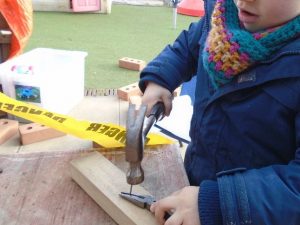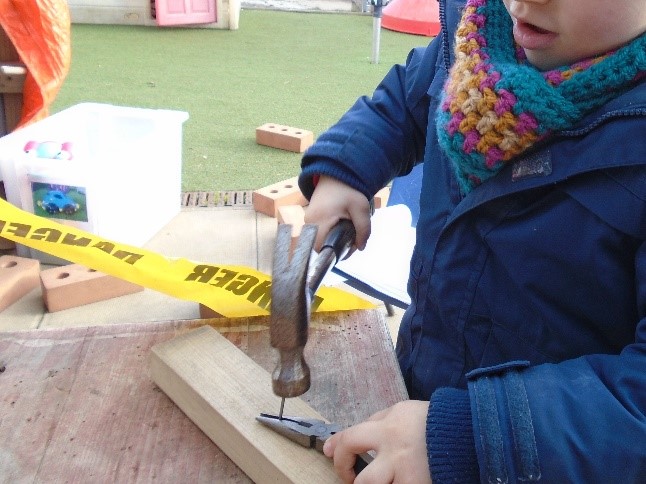Learning through Risky play
In this months blog, we will be looking at the benefits of Risky Play. This is a concept that we believe in here at Clapham Preschool. While Early Years settings will always have a responsibility to keep children safe. Sometimes it seems that through vigorous risk assessments equipment, situations and activities we can impede development. Therefore, this can have an impact on the children’s opportunities to problem solve and self-assess risk.
What is Risky Play?
Risky play supports children in testing their limits and exploring their boundaries. Early Years settings can promote and extend activities to provide children with the opportunity to push boundaries in a safe and managed environment. Taking risks and learning new skills is key as a child – we encourage the children to use their fine motor skills in hammering in nails or sawing wood (always very supervised by staff).
Why We Have Risky Play
Outdoor play is commonly full of risks, in which the practitioner must eliminate dangers through risk assessments. However, the outdoor environment also offers children a wide range of opportunities to explore and learn about the world in which they live. Some professionals believe that you should give children the space to explore dangerous situations. Activities such as climbing, can help children gain an awareness of danger and manage risks. If children are only offered safe situations, they may not learn how to manage risk and promote safety.
 What We Can Achieve
What We Can Achieve
We want to encourage children to learn about safety through risky play can be through the use of real tools. Small hammers and screwdrivers can be seen as potentially dangerous equipment, yet allowing children to access and use these tools within a safe and supervised environment can teach them to respect danger and manage risks. We offer blocks of wood with nails held in pliers thus enabling the children to refine fine and gross motor skills by using the tools. We can aid children in thinking about safety by encouraging children to assess the situation for risk.

